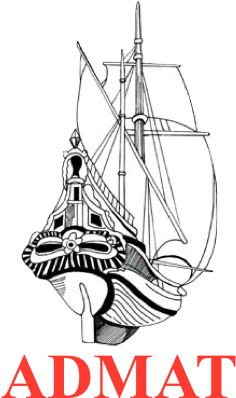Le Dragon Wreck 2018 Project
The Cannons
During the 2018 survey, Cannon 2 and 3 were completely uncovered prior to the survey, probably by the winter storms and had months of marine growth on them. The photographs of the cannons are of number 2 and 3. Cannon 1 was covered by 30 cm of loose “liquid” sand and the top section of the cannon was partially uncovered. Cannons 4 and 5 were buried too deep to be uncovered during the 2018 survey due to the time it would have taken. From the notes from the 2000 survey, it is estimated that cannons 4 & 5 are now buried around 3-4 meters deep in the sand. When the site was last inspected in 2012 the entire site apart from the top of the ballast pile was buried, no cannons were visible at all. It is estimated that 4-5 meters of coverage had been washed away from most of the entire site by storms and judging by the marine growth it is probable that this occurred around early 2018.
So far, we know that there are 5 iron Carron 9 pdr cannons on the Dragon Wreck site. These were located in the 2000 survey. Cannon 1 (Cw/2000/F/Or/4001) was located with the muzzle overhanging the port bow cant frames No: 6 & 7. Cannon 2 (CW/2000/F/Or/4002) and cannon 3 (CW/2000/F/Or/4003) were in the centre section either side of the forward mast step. Cannon 4 (CW/2000/F/Or/4004) was overhanging the starboard side and Cannon 5 (CW/2000/F/Or/4005) had fallen off the starboard deck into the mud and sand.
In addition, there were three Carron 9 pounder cannons recovered in the 1990s. Close examination of the three already recovered yielded substantial information. The three were raised from their holding position under the pier at Manzanillo and were analysed by Dr Spooner and Christine Nielsen. To avoid confusion these cannons were numbered 6, 7 and 8. Cannon 8 (CW/95/Or/2484) had pieces of brick and lead sheeting still concreted to the cascabel. These were similar to the bricks found in the forward section between Cannon 1 and Cannon 2. We do not know where these three Carrons were removed from the wrecks site as there is no information from the people who removed them in the 1990’s. However it is a working hypothesis that they were found from the amidships forward section and that Cannon 8 was located on the starboard bow section possibly opposite Cannon No:1.
The best of the three cannons previously raised and placed in the holding area under the pier was Cannon 6 (CW/95/Or/2482). This was in a remarkable state of preservation, having no concretion on it at all. There were a few minor iron blisters on the cannon, but on the whole, the cannon looked pristine. This is very unusual, as iron cannons are generally well concreted. This cannon was measured and investigated on the basis that the other seven cannons were probably the same. This hypothesis was confirmed, as the three previously recovered, when measured appeared to be identical. Cannon 6 was an iron 9 pdr made by the Carron Iron Foundry. It was cannon No:982 and weighed 14:1-10.
Whilst these Carron Cannons from Le Dragon are not carronades, the timing is important, as the Carron Iron Company switched from making ‘iron long guns’ like the cannons recovered from the wreck to carronades in late 1778 (the date of manufacture of the trunnion of No:8 Carron Cannon). This indicates that as these Carron guns are of the same date, they were probably some of the last ‘long 9 pdrs’ to be manufactured. In addition the fact that on the archaeological information gained so far, all eight iron cannons are identical. This suggests that they were placed on this ship as a set and not individual cannons.
We currently believe that these cannons were part of the American refit in May 1782 after the ship was captured from the English.











